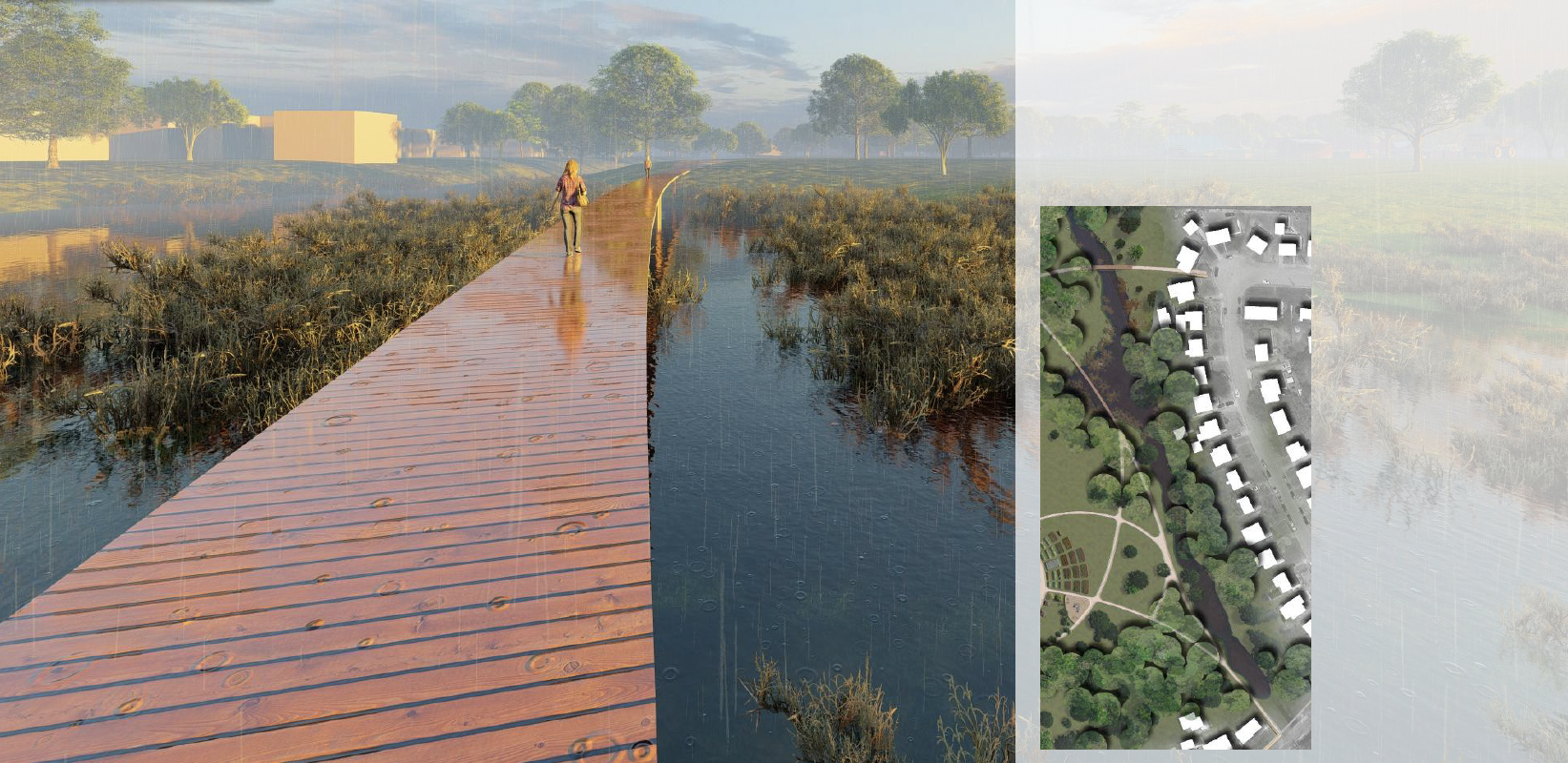
Neighborhoods Initiative
Mission of the Initiative
To pursue environmental justice for disenfranchised and underserved Virginia neighborhoods in ways that reflect their histories, honor their cultural identities, and help them accomplish their plans for the future.
The Collaboratory
Wetlands Watch’s Neighborhoods Initiative focuses on building climate resilience in neighborhoods by fostering rich partnerships between community groups and Virginia’s top academic institutions. This collaborative effort brings students from architecture, engineering, and other disciplines together with local Virginia residents to co-create neighborhood-scale resilience plans and strategies to reduce flood risk.
The benefits of these partnerships go two ways: students gain experience in the field and enhance their professional skills, and Virginia neighborhoods receive practical, nature-based solutions that address flooding and other climate-related challenges in their communities.
We coordinate the partnerships between academics and community groups through our Resilient Design and Research Collaborative Laboratory, or “Collaboratory.”
If you are an academic or represent a community group in Virginia, and would like to consult with us about a potential project, contact Jelani Sparrow, the Collaboratory Program Manager for details.
Collaboratory Projects
Introduction
Over the past decade, Wetlands Watch's Resilient Design and Research Collaborative Laboratory, or “Collaboratory,” has become a key player in driving climate resilience efforts in coastal Virginia. Launched in 2014 with a pilot project bringing students from the Coastal Community Design Collaborative (Hampton University and Old Dominion University) into Chesterfield Heights, Norfolk, the Collaboratory has grown into a regional initiative that unites academic disciplines, professionals, and local communities to tackle pressing climate adaptation challenges. This unique collaboration engages students, local governments, private firms, and residents in co-creating nature-based resilience designs that address real-world flooding and climate threats.
Video Introduction to the Collaboratory Pilot Program in Chesterfield Heights
From 2014 to 2024, the Collaboratory has made significant strides. Hundreds of university students have applied their academic training in fields like engineering, architecture, and planning to local projects, directly contributing to flood mitigation and adaptation strategies. Their efforts have helped bring critical funding for community initiatives into neighborhoods, including the $120 million awarded to Norfolk for the Ohio Creek Project, while also helping to prepare a new generation of professionals equipped to handle 21st-century climate change challenges.
What makes the Collaboratory stand out is its ability to transform academic research into practical, community-driven solutions that directly benefit Virginia residents, particularly those in underserved and historically marginalized areas. As we look beyond 2024, Wetlands Watch remains committed to developing Neighborhood Resilience Action Plans for these communities and supporting their efforts to secure funding and implement flood risk reduction strategies.
Previous Collaboratory Projects
For a summary of our work over the last decade, check out our Resilient Design Collaboratory: Summary of Work (2014-2022).
For details on our sixteen (!) previous Collaboratory projects, click below.
Aberdeen Gardens Multi-Year Project
Coastal Community Design Collaborative (Hampton University and Old Dominion University) and Virginia Tech students meet with residents during a September site visit to Aberdeen Gardens
Wetlands Watch’s multi-year project in the Aberdeen Gardens neighborhood of Hampton, VA, resulted in the creation of its first Neighborhood Resilience Action Plan (RAP). This community-driven plan honors the neighborhood's historical significance and environmental assets while focusing on flood mitigation strategies. The RAP serves as a roadmap for securing funding and implementing nature-based flood protection solutions, such as rain gardens and creek restoration. Students from the CCDC and Virginia Tech created the designs featured in the RAP.
In collaboration with the City of Hampton, Hazen & Sawyer, and our academic partners, Wetlands Watch continues to advance climate adaptation efforts in the Aberdeen Gardens community, focusing on the implementation of the Neighborhood Resilience Action Plan (RAP).
Supported by generous funding from The Blocker Foundation and Virginia Sea Grant, the project emphasizes nature-based flood protection strategies, such as bioswales, rain gardens, and tree planting. Together, these partnerships aim to build long-term community resilience while respecting Aberdeen Gardens' rich history and environmental assets.
More details on our work below.

